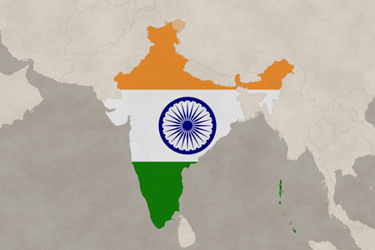AI-Enabled Medical Devices In India: Opportunities And Challenges
By Attrayee Chakraborty, Northeastern University

The medical device market in India is one of the best places for the world to tap into since the early 2000s. Many are watching the evolution of the medical device industry in India, with McKinsey and Co. predicting that competition in the medical device space will follow a trend that has occurred in other industries: multinational corporations (MNCs) establish the market, followed by local companies reverse engineering MNC products to come up with low-cost solutions, and, finally, local companies develop customized products aligned with the market to export globally. With the medical device industry currently ripe with resources and few players in the field, it won’t be surprising to see if Darwin’s theory of evolution will play out.
This year more than 170 artificial intelligence (AI)-enabled medical devices were approved by the FDA in the U.S. Will the future of medical devices in India also be represented by AI-enabled medical devices, wearables, and the dominance of connected technology?
India’s growth story for medical devices is nascent and in the making: the size of the Indian medical devices market is estimated at $11 billion in 2022 and is expected to grow to $50 billion by 2030, with a CAGR of 16.4%. The diagnostic imaging market — currently dominated by AI-enabled radiology imaging tech — is expected to expand at a CAGR of 16.4%.
As of now, the medical device industry in India is being recognized by the Indian government as a potential revenue-generating sector, with programs such as the Production Linked Incentive (PLI) Scheme for Medical Devices (2020), regulatory changes focused on medical devices, and centers of excellence being established at Indian institutes of technology to support the Make-In-India initiative. The sector has attracted significant investments over the years, the latest being the National Medical Devices Policy (NMDP) in late April last year. With the focus on meeting public health objectives of access, affordability, quality, and innovation, the NMDP seems to hit the mark when it comes to requirements for creating infrastructure for the youngest population in the world. The simultaneous growth of the Indian regulatory space to ensure quality products is on the rise, an example being India defining Software as a Medical Device (SaMD).
These efforts seem promising (and necessary) for a population that is currently experiencing its largest ever adolescent and youth population — and is expected to one day become the oldest in the world. The question now arises as to whether adopting regulations in the healthcare industry can catch up with the light-speed evolution of medical devices with growing concerns on the validation of AI, security, and bias risks.
The Current Landscape For AI-enabled Devices In India
The use of large language models (LLMs) is on the rise, with India being the second-most user of LLMs like ChatGPT. While the application of LLMs in clinical decision support systems like IBM Watson for Oncology and company-hospital partnerships such as Google’s DeepMind collaboration with Moorfields Eye Hospital, the opportunity to use LLMs for the Indian population seems bright, given that India's doctor-population ratio stands at 1:834 and physician burnout is rampant. The discussion on pro-innovation ethical AI has begun in India, with the NITI Aayog releasing the National Strategy for Artificial Intelligence #AIForAll and its two-part approach for declaring principles of responsible AI and ways to operationalize it. However, there is no clear regulation on how AI should be deployed in healthcare settings in the Indian space yet. We can expect a draft regulation on AI regulation by the MEiTY and it will be interesting to note whether it applies to India’s burgeoning healthcare sector.
Is India A Market For Easy Access?
With the lack of clear regulation on AI in healthcare, does India present itself as a market where clearance of AI-enabled medical devices is low-hanging fruit?
Since there is no distinction between AI-enabled medical devices and other medical device categories in Indian regulatory parlance, India is viewed as a relatively easy market for AI-enabled devices. Medical device registration in India through the Central Drugs Standard Control Organisation (CDSCO) typically takes approximately six to nine months, provided that no technical presentation or Subject Expert Committee (SEC) review is necessary. The registration remains valid indefinitely if the maintenance fee is paid every five years. Currently, there are no specific provisions for the registration of AI-enabled devices — making it a hot market for AI-enabled medical devices.
While India has focused many of its laws on protecting digital health data, such as the Digital Information Security in Healthcare Act of 2018 (the DISHA), it has yet to make clear requirements that devices incorporating AI need to meet, specifically the use of large multi-modal models (LMMs) such as ChatGPT-plugins for medical devices. As per the WHO’s guidelines on the ethics and governance of AI for health, the key challenges lie in demarcating phases of development and deployment of such systems, risk assessment for each phase, and risk mitigation by all stakeholders. The WHO suggests actions for deployers such as certification for programmers (who often learn as they develop such systems), audits in early development, and making design accessible (not black box) for regulators to have greater visibility on such technology. It also recommends regulators enact laws requiring impact assessments, audited by third parties and disclosed publicly, and exploring regulatory sandboxes for controlled resting before launching for experimental use. India can take these recommendations to frame its digital policy to hold developers accountable, especially with increasing concerns about biased AI models as seen in the recent Gemini AI bias case.
Are Regulations Enough For Digital Health Access?
There is increasing emphasis on regulations built around fairness, transparency, responsibility, safety, accuracy, and robustness. As AI disrupts the medical device market, it is an apt time for India to frame its regulations, run pilot programs, and collaborate with stakeholders to build a home-grown regulatory policy in a global setting.
Innovation in AI-enabled digital technology promises a brighter future in public health for all countries. The lingering question of equitable access remains unanswered, however. Countries like India still face a digital divide. As per the India Inequality Report (2022), approximately 70% of the population has poor or no connectivity to digital technologies while more than 60% of Indian households remain digitally illiterate. This can create a divide in health access with roots lying in digital inequality.
Data And Algorithm Bias
A concerning trend is the rise of algorithms commercially deployed in countries out of context. An example is that most algorithms are trained on data arising from the manufacturer’s country of origin, leading to data used in model training being different in terms of demographics, body weight, and environmental factors than the countries where they are deployed. Indian regulations, as of today, require clinical trials to be conducted in India for importers. The regulations do not specify that algorithms need to be trained on Indian user data, leaving a blind spot for the CDSCO to verify whether they were trained on India-specific health data.
Digital Technology Partnerships And Data Privacy: Potential For Healthcare Fraud?
It is interesting to note the rise of digital health technology partnerships with pharma companies. While these are intended for faster and more integrated access to medical care, concerns about data privacy are not surprising. A recent case of durable medical equipment (DME) companies paying illegal kickbacks to telehealth companies in the U.S. exemplifies this concern. With massive amounts of healthcare data – to the tune of 1.4 billion individuals – Indian regulators must act on data privacy and anti-kickback policies before similar industry actions lead to biased patient diagnosis and prescription.
Conclusion
As regulations start catching up to technology, it is important to bear in mind that AI-enabled medical devices require infrastructure support for expected functioning and equal access to practically benefit all. Training and validating AI models with contextual data is one way of mitigating risks emerging due to bias. With increasing investments by the Indian government in the medical device industry, commitments made to protect data privacy, and the acknowledgment that AI should be regulated, India is at a pivotal juncture of embracing a technology-driven healthcare revolution amidst an evolving regulatory landscape.
References
- India Brand Equity Foundation, Medical Devices Industry in India – Market Share, Reports, Growth & Scope. Published in February, 2024. Last Accessed on March 9, 2024. Website URL: https://www.ibef.org/industry/medical-devices
- International Association of Privacy Professionals, India to introduce draft law regulating AI. Published on February 23, 2024. Last Accessed on March 9, 2024. Website URL: https://iapp.org/news/a/india-to-introduce-draft-law-regulating-ai/
- Council on Foreign Relations, Don’t Let AI Become the Newest Digital Divide. Published on January 18, 2024. Last Accessed on March 9, 2024. Website URL: https://www.cfr.org/blog/dont-let-ai-become-newest-digital-divide
About The Author:
 Attrayee (Atty) Chakraborty is a master’s student in regulatory affairs at Northeastern University, Boston. With a background in working with medical device startups and Fortune 500 companies in India and the U.S., she is committed to quality improvement in the healthcare space. Chakraborty has previously spoken on AI integration in healthcare systems, drug misinformation, quality culture, and international regulations at numerous conferences (DIA 2023, SQA 2024, ISPE Annual Conference 2024). She has been featured in The Huntington News, International Society of Pharmaceutical Engineering (ISPE), and The Doc Suit.
Attrayee (Atty) Chakraborty is a master’s student in regulatory affairs at Northeastern University, Boston. With a background in working with medical device startups and Fortune 500 companies in India and the U.S., she is committed to quality improvement in the healthcare space. Chakraborty has previously spoken on AI integration in healthcare systems, drug misinformation, quality culture, and international regulations at numerous conferences (DIA 2023, SQA 2024, ISPE Annual Conference 2024). She has been featured in The Huntington News, International Society of Pharmaceutical Engineering (ISPE), and The Doc Suit.
